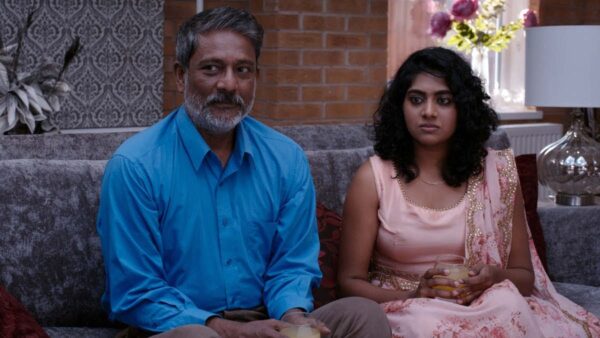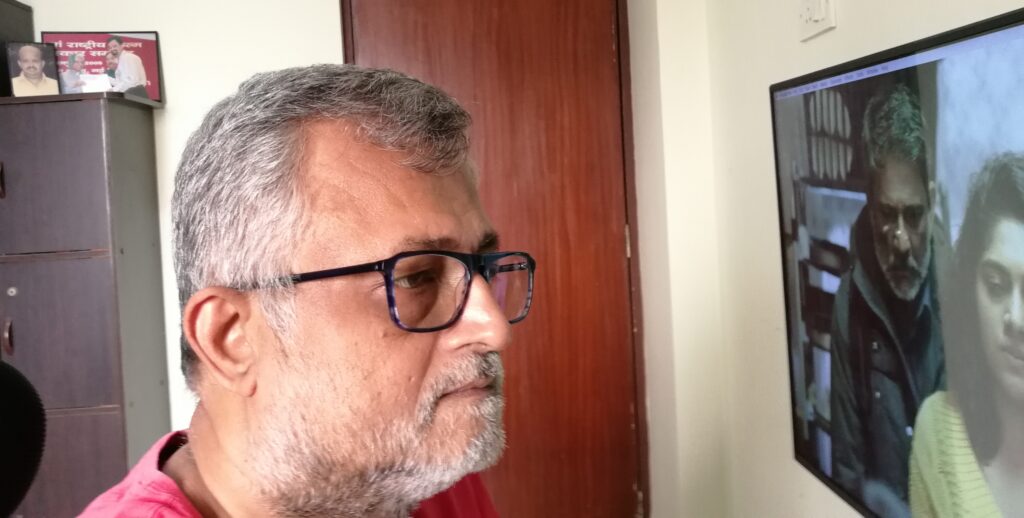He is one of the finest film editors in India, having edited close to 60 feature films. An alumnus of the Film and Television Institute of India (FTII), Pune, with specialization in Film Editing, Suresh Pai is also a two-time National Award winner for Sunhil Sippy’s Snip! (2000) and Madhur Bhandarkar’s Page 3 (2005). Some of the films edited by Pai include Everybody Says I’m Fine (2001), Leela (2002), Raghu Romeo (2003), Mixed Doubles (2006), Bheja Fry (2007), Mithya (2008), Bubble Gum (2011), Ankhon Dekhi (2013), Kothanodi (2015), Khadakh (2019), Jhalki (2019), RK/RKAY (2021), Jungle Cry (2022), and Everybody Loves Sohrab Handa (2023).
Dipankar Sarkar spoke to Pai regarding his recent film, Footprints On Water (2023), a film that has been garnering a lot of critical acclaim and has won multiple awards on the film festival circuit.
When you read the script for the first time, what was your thought process regarding the bleak reality of the subject?
When I first read the script I was moved, in fact, a bit disturbed because of – what you have rightly said – the bleak reality of the subject. I could see that the script had been written with great care, giving attention to minute details, which only someone who has observed these things from close quarters could have done. The script spoke of the despair of an NRI father in search of his daughter who has gone missing in a land which is still foreign to him – despite him having lived there for seven years – and also about the futility of their existence in that alien land. And I felt that the only way I could do justice to the script on the edit table was by highlighting the emotions of the actors, the angst on their faces which would, in turn, accentuate the pathos of the situations they find themselves in. And with the film having fabulous performances from actors like Adil Hussain and Nimisha Sajayan, it was all quite simple really.
How important is the director-editor dynamics in shaping up the film? Can you offer a few insights into your working process with the director?
Obviously it is very important, both creatively and psychologically. When a director gives you a long leash on the edit, it helps greatly knowing that he or she has confidence in your ability. It helps you in coming up with better work and often, even a superlative one. My idea was that we dwell longer on the expressions of the actors, their natural pauses and introspections, which meant that the shots would linger a bit longer. Luckily for me, director Nathalia Syam and I were on exactly the same page. Her only instruction, rather request, before I started editing was to avoid the repetition of camera angles in a given scene as far as possible. Lesser the repetition, longer the shots – what more could I have asked for!
Was there any significant change in the structure of the film, translating from script to screen? Was there ever a drastically different tone or pacing, or had those major beats been established at the screenwriting level?
No there wasn’t any drastic deviation from the script, neither in the film’s structure nor the tonality which was inherent in the script. But, having said that, you know that the making of a film is an ever evolving process – what starts with the germination of an idea culminates into what you see finally on the screen. And during this process, when the film reached the final stages of the editing, both Nathalia and I felt that some of the scenes which had looked good on paper weren’t working as well as we expected on the screen. So we had to drop some scenes and drastically trim certain others. For example, Meera and Arvind’s proposal scene was originally much longer than what it is now in the film and its placement in the film was also changed. Similarly a few other scenes were also shuffled. But all for the betterment of the film, of course.

The film moves seamlessly between the past and the present, so how did you go about setting the rhythm of the film?
I listen to a lot of music, across genres. And what happens to me most often when I read a script, is that I get transported to the world created by the writer where I can sense recurring pieces of music which, more or less, match with the emotional tone that I have perceived in the script. There were two music pieces the feel of which guided me in the edit. One was an instrumental piece called Aequilibrium – Mediaeval Tune (by a Russian composer Andrey Vinogradov) which helped me set a slower rhythm for scenes showing Raghu’s helplessness, his melancholy and abject despair. The second one was a song composed by Philip Glass called Primacy Of Number from the film Naqoyqatsi (2002). This piece guided me whenever Raghu got desperate and frantic towards the climax.Coming to the film going back and forth between the past and the present, let’s be fair to the writer, Neetha Syam. Most of the points of departure were already quite well marked out in the script. It was only in a couple of situations -like when the proposal scene had to be heavily truncated – that we had to take a detour from the script.
How long was the editing process?
If you look at the actual number of days, it took me less than three months. But since the editing happened during the lockdown in the year 2021, the process spread over 6 months. Moreover, Nathalia lives in UK and I was here in Mumbai. I used to upload the cuts and then Nathalia would watch it and then email her feedback. In September 2021, she finally came down to Mumbai and sat with me for about three weeks and we locked the final edit.
There is one sequence from the film that I would specifically like you to discuss. The montage sequence that follows after Meera (Nimisha Sajayan) makes her first attempt to escape.
The sequence you mention happens at a point in the film where Meera, already having been in captivity for some time, attempts an escape. But she gets caught and in the ensuing struggle she’s hit hard and she blacks out. That’s when we go into the montage. The black out is instantaneous but entering the montage from blackness happens over a slow fade in. The purpose of the montage is two pronged. For one, you are floating into her subconscious mind where you see a longing for those happier times with Rehan and her father, a longing for her freedom, not just from captivity, but also from the shackles of living a life of an illegal immigrant. Secondly, the images also help in revealing to the audience what had gone wrong between Meera and Rehan.
Which scene or sequence in the film was most challenging for you to edit and made you feel really happy about?
I would say the pre-climax and the climax where I had to switch gears from a predominantly slower rhythm to a quicker rhythm while trying to maintain the suspense and the intrigue. What happens in the climax is quite shocking and unexpected and meant to give the audience a solid jolt. Though the sequence of events were written quite well in the script and directed brilliantly, the actual pacing of the sequence and the way things finally unfold culminating in the revelation had to be tackled extremely carefully on the editing table. I’d like to think that we pulled it off and both Nathalia and I are pretty happy with what we achieved.
Your final words on the critical success of the film.
I’m absolutely elated at the way that film festival audiences all over the world have reacted to Footprints On Water. My chest swells with pride seeing all the awards the film has won at various film festivals and seeing all the praise and love showered on the film. I have to say hats off to Mohaan Nadaar for showing the courage and conviction to produce this film. I now pray that Footprints On Water gets a theatrical release soon so it can be appreciated by wider audiences.



Great read!